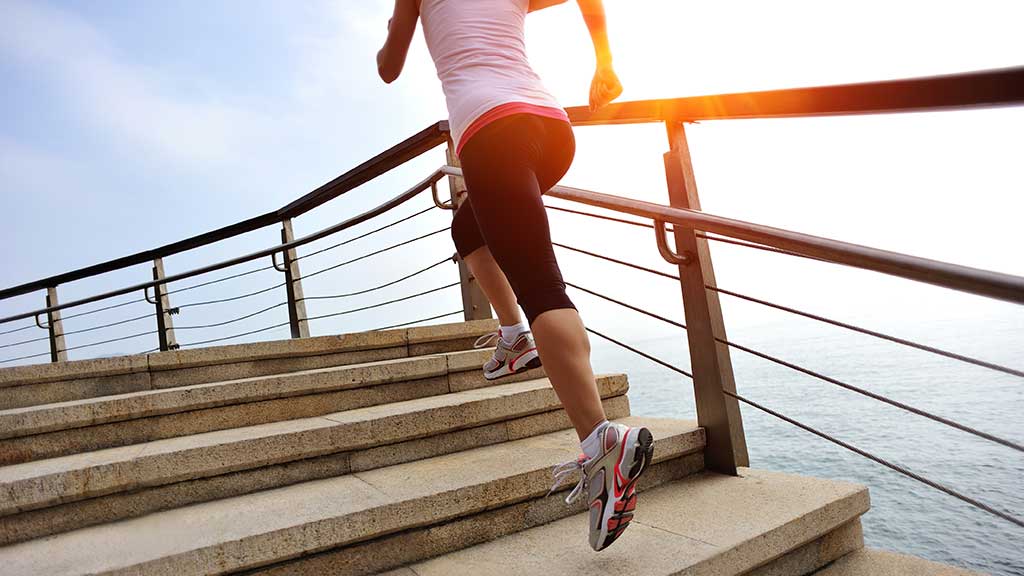Get our independent lab tests, expert reviews and honest advice.
Sportswear – why is it so expensive?

Sportswear may once have been a practical concern, but those days are long gone. Sportswear has entered the realm of fashion and prices have jumped accordingly – even in the face of tough retailing conditions. The $2.2bn performance- and sports-inspired apparel sector in Australia has been growing more rapidly than general apparel, according to Euromonitor International data. Between 2008 and 2013, the sportswear market grew by more than 10% while the general apparel sector grew by only 5.9%.
On this page:
- Value for money
- Tights on test
- Care instructions: wash by hand?
- Why so expensive?
- Finding good quality gym clothes
- The ethics of what you wear
- Plus-size clothing
While Nike and Adidas have a stronghold on first and second place in terms of market share at around five to six per cent, luxe sports brands such as Lululemon and Lorna Jane are catching up – and fast.
Gym clothes to stretch the budget
Depending on where you look, a pair of gym pants alone may set you back more than $100. And if that doesn’t make you gasp, try this on for size. The luxury fashion site Net-a-Porter’s latest venture, Net-a-Sporter is selling $454 neoprene leggings and $380 stretch jersey leggings, neither of which are even machine washable.
Staying on trend with the latest sportswear fashion may be a joyous exercise for some people, but there are others who simply want good quality, well-fitted garments to sweat in.
Given you can get a pair of tights for under $10 at discount department stores, do you actually get a better product if you’re forking out $100? Or are you simply paying a premium for the brand?
The test results do suggest that quality doesn’t necessarily increase with price.
Value for money
To get to the bottom of the price vs quality question, we put some gym pants to the test. We chose seven gym pants from different brands, ranging in price from $7.50 to $109. We aimed for the plainest grey or black gym tights we could find in the range, and made sure the fabric had a mixture of polyester or nylon and elastane, also known as spandex or Lycra (brand name). The Kmart leggings were more of a fashion tight which we included as a comparison.
The quality of a sportswear garment can be determined by a number of factors, says Paula Rogers, a partner at the Apparel and Textile Industries Group (ATI) and fellow at the Textiles Institute in the UK. The critical factors are fabric, stitching and fit. You’d also expect it to be colourfast so that colours don’t run when you wash them, she says.
Fit is an important consideration, but it’s also tricky to measure and probably best left for you to test in the change room. But to assess functional quality, we assessed the fabric, colourfastness to washing and stitches per inch. Rogers also gave us her thoughts on the garments’ construction.
Tights on test
We put our seven pairs of tights through the wringer at the NATA-accredited Textile Testing Services laboratory at RMIT university in Melbourne. We tested fabric quality using a stretch and recovery test, and tested the tights for colourfastness to washing.
- Lululemon’s Wunder Under Fullux*
- Lorna Jane’s All day Corestability LJ Excel Classic*
- Nike Legend 2.0 tight poly Dri-fit*
- Adidas’ Ultimate Fit tights* Climalite
- Big W’s Michelle Bridges One Active Melange tight*
- Cotton On’s Active Core tight*
- Kmart’s LDS full length legging (fashion tight)*
Fabric quality
Once a brand selects their sportswear fabric, they don’t change it for a long time, says Meriel Chamberlin, another partner at the ATI Group.
Stretch and recovery is one of the best tests to assess the quality of stretch fabrics, according to the experts. Five fabric samples are stretched out with 2kg of force applied, each five times. The test is designed to mimic how the fabric will behave over time.
Ideally, the fabric should stretch sufficiently (which makes the tights easy to put on) and then stretch back, or recover, well so you have a firm fit. How well the fabric recovers is indicative of how loose the pants will get over time.
The critical factors are fabric, stitching and fit. You’d also expect it to be colourfast.
Stretch and recovery
From best to worst, the pants with the best width recovery:
- Adidas
- Nike
- Michelle Bridges
- Lululemon
- Lorna Jane
- Cotton On
- Kmart
Kmart’s fabric showed the biggest jump downward in quality, twice as bad as Cotton On’s score, which came sixth. However, it’s important to note Kmart’s tights weren’t marketed as a sportswear product. For the six sportswear products there wasn’t a whole lot in it and all were in the acceptable realm.
Colourfastness to washing
One of the care requirements on Lorna Jane’s tights is to wash the pants with a tablespoon of salt before use. On its website it explains this is necessary as some colours aren’t colourfast. An interesting requirement on a $99 pair of pants.
Chamberlin, who’s also a chartered colourist and associate of the Society of Dyers and Colourists in the UK, says there’s sufficient science in the dye industry these days that “no garment that’s black should have to have that written on it”.
“Neon and very bright colours can be harder for good colourfastness, so labelling to wash separately can be wise,” she says. “However, when designers develop their colour palettes with their dyers, a few tweaks can make all the difference for great shades and great quality”.
Sometimes cautious care instructions are given if products haven’t been tested. But when we asked Lorna Jane, she told us that extensive testing (including colourfastness) is conducted on every new style.
So does it mean the pants aren’t colourfast?
To find out, we put all seven pairs of pants under the microscope in the RMIT laboratory for colourfastness to washing. They were assessed for colour change (indicative of how much they’ll fade) and for staining (how much they’ll stain your other cotton and nylon clothes when washed together).
In terms of colour change all seven pants performed well and fared exactly the same. But when it came to staining there were some differences. Funnily enough, the Lorna Jane tights performed well with no staining of either cotton or nylon, even with no salt added. The Lululemon, Nike and Adidas tights also fared well. Cotton On’s tights performed satisfactorily but not quite as well when it came to nylon. However, the Kmart leggings only met the minimum requirement of the Australian Garment Mark for staining cotton and the One Active Michelle Bridges only met the minimum requirement for staining nylon.
Pilling
Certain fibre combinations are more likely to pill than others. “Nylon and polyester combined with elastane doesn’t tend to be a pilling combination,” says Rogers. But add a bit of viscose or cotton to the polyester and it’ll be more likely to pill.
Moisture-wicking
Most sportswear will advertise a garment’s special sweat-wicking properties, but is it just marketing hype? Chamberlin says there’s definitely something in moisture-wicking fabrics but it doesn’t mean you have to pay through the nose for it. “A decent sports fabric isn’t prohibitively expensive,” says Chamberlin.
It’s also important to remember that the efficacy of moisture-wicking fabrics does depend on how well the garment fits – if it’s not in contact with the body it won’t wick away moisture.
One way to test if the garment has moisture-wicking properties is to flick water onto the fabric. The quicker it sinks in, the better it will wick away moisture. If it beads on the surface, it’s a bad sign.
Seam strength and stitching
In addition to the fabric quality, the stitching and seam strength is also important. The strength of the seams is dependant on a range of factors, however as a general rule, the more stitches per inch, the greater the seam strength. The industry standard is at least 10–12 stitches per inch, but when it comes to sportswear, it should be more like 12–14, says Rogers.
| Stitches per inch | |
|---|---|
| 1. Adidas | 13-16 |
| 2. Nike | 13-14 |
| 3. Lululemon | 13 |
| 4. Michelle Bridges | 11-12 |
| 5. Lorna Jane | 11 |
| 6. Kmart | 10 |
| 7. Cotton On | 9 |
Stitch type
Another consideration is the stitch type used. For a stretch fabric, a flat or overlocked seam is ideal rather than a lock/straight stitch. To test the stitching integrity pull the seam longways and ensure there are no cracking sounds.
A flat seam is likely to be more comfortable for the wearer than a plain overlock stitch as it’s less bulky. It may also be slightly stronger, but the difference is probably marginal.
While the Adidas pants had the highest number of stitches per inch and had a flat seam on the back rise, it used an overlock stitch on the inseam of the leg. With the exception of Kmart and Cotton On, the other pants had flat seams.
Rogers says the choice of stitch type can be a cost-saving exercise for the manufacturer. For example, an overlocked seam will use less thread than a flat seam. “It will also be quicker in manufacturing,” says Rogers.
Care instructions: wash by hand?
The care instructions for the Lorna Jane and Cotton On Body pants both specify washing by hand. In fact, when we bought the pants at Lorna Jane, the sales assistant used the opportunity to sell us one of their branded washing bags. Hand washing is generally included on a care label for one of two reasons, says Rogers: either there’s concern around the fabric quality, or the garment hasn’t been tested. Sportswear fabrics should be machine washable, says Rogers. “I wouldn’t consider these to be delicates”.
Cotton On told CHOICE that it’ll be changing its care labels next year on its Core Tight range to allow cold, gentle machine washing. And despite what it says on the care instructions, Lorna Jane told us that unless they have reflective or delicate prints, garments can be washed in a delicates bag on a cold wash in the machine.
It’s worth noting that elastane does degrade over time and at a higher rate than the fibres that house it such as polyester or nylon, so it does pay to look after it. Don’t leave your gym wear wet for long, don’t soak them in Napisan and avoid tumble drying.
Elastane degrades over time and at a higher rate than the fibres that house it such as polyester or nylon, so it does pay to look after it.
Why so expensive?
So where, exactly, are the costs in making sportswear? “The fabric is generally the most expensive part,” says Rogers. The cost of manufacturing is low in comparison to the fabric cost, she says, particularly true given all the gym wear we looked at was made overseas in south-east Asia.
Dr Sean Sands, research director in the department of marketing at Monash University, says brands would also argue a significant cost is the investment in product development and marketing.
Despite such costs, for big global companies like Nike and Adidas the sheer number of garments sold means they reap the rewards of more cost-effective testing as well as having more leverage over their supply chain to ensure that quality is maintained.
The verdict?
Ultimately there’s no definitive formula to find the perfect pair of pants for every individual. No matter the fabric quality, if they don’t fit properly or feel good they won’t encourage you to get out there and exercise. And great fabric won’t make up for shoddy workmanship.
But the test results do suggest that quality doesn’t necessarily increase with price.
Of the two tests we conducted in the labs, the Adidas tights with ‘Climalite’ fabric ($60) fared best, followed by the Nike tights with ‘Dri-fit’ fabric ($69.95). These two also came up trumps in the stitch per inch count and colourfastness test. While the Michelle Bridges ($35) tights came in third in the stretch and recovery test, there’s room for improvement when it comes to colourfastness.
The two most expensive pairs of tights – Lorna Jane ($99) and Lululemon ($109) – certainly didn’t fare badly in the fabric tests, but they didn’t come out on top either, suggesting you don’t necessarily have to fork out big dollars to get quality sportswear.
In terms of value for money, Rogers thought the Michelle Bridges tights were the best at $35, with good construction and nice detailing. However, she thought the Lorna Jane and Lululemon tights were the best in terms of construction. She also thought both the Adidas and Nike pants were well made, but rated them just after the Lorna Jane and Lululemon tights, mostly because the waistband didn’t feel as firm.
Overall, given the trend towards sportswear as fashion, it’s likely that the extra dollars you fork out may well be for style or brand rather than quality.
Finding good quality gym clothes
Look at the stitching
- Sportswear should have around 12–14 stitches per inch.
- A flat or overlocked seam is ideal for stretch fabrics – make sure it’s not just straight stitch. Pull the seam longways and make sure there are no cracking sounds.
- The stitch tension should be just right – does the thread look loose and bubbly or too tight?
- Make sure there’s adequate seam allowance.
Look at the fabric
- Stretch some of the fabric out over your fingertips sideways. How well does it go back to its natural state? If it bubbles up it’s not a good sign.
- Find out if it has sweat-wicking properties by discreetly flicking a droplet of water onto the pants. The quicker it soaks in the better. If it beads up, look elsewhere.
Look at the fit and style
- Try them on. Move around and stretch. Make sure they feel comfortable, that they’ll stay up and that the seams won’t chafe.
The ethics of what you wear
If it’s important to you that your gym wear is ethically made, you may find it difficult to trace its journey from crop to closet. We made this point in our story on ethical clothing. Price isn’t necessarily an indicator of ethics so if it’s your top priority, you’re better off choosing one of the sportswear brands that have been accredited by Ethical Clothing Australia. This ensures that for a brand’s Australian-made clothing, supply chains have been monitored and workers have been paid award wages. For example, Puma has been accredited, but only for its clothes made in Australia. Another source to help you buy ethical clothing is Good On You, a shopping site which rates brands.
Plus-size clothing
When we asked people on Facebook what was important when looking for sportswear, many pointed out the lack of sportswear in larger sizes. Plenty of brands don’t go past a size 16. The general brand response to this complaint was they chose their sizing range based on customer demand. Kmart said that although its current range only goes to size 18, it’ll be launching styles in sizes 18–26 early this year.


